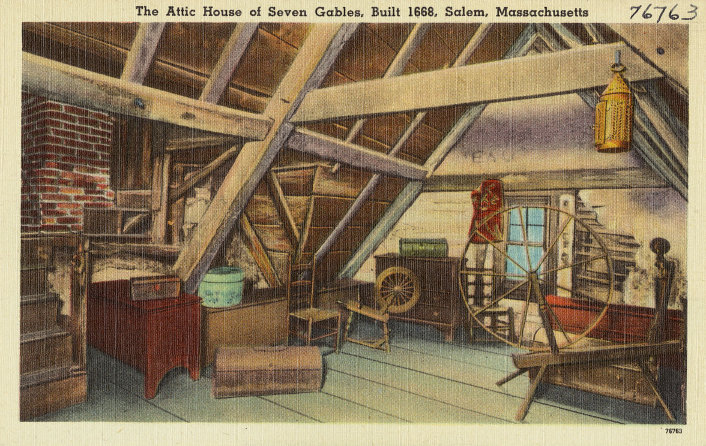Organized Attics Keep Homeowners Happy

Home organization efforts sometimes stop at the attic door. The seldom used crawl space or walk-up attic is a natural catch-basin for accumulation. Things get dropped off in the attic when they are no longer useful, rather than being deposited in the trash where they belong. Cherished keepsakes are stashed in attics too, growing in numbers as school art projects and vacation mementos pile-up. Over time, the eclectic deposits seem to take on lives of their own, sprawling willy-nilly across undefined attic boundaries.
When enough is finally enough, ambitious homeowners regain control of attic spaces, using proven strategies to rein-in clutter.
Assess the Situation
The state of your attic depends on a number of factors, including how long you have lived in your home. The more years you’ve had to let things go, the more surprises you’ll probably find in the attic. On the other hand, long-term residents may have been through this drill already, conducting prior attic organization campaigns. Whatever the case, figure out where you stand before devising a master plan.
Start by going through the whole attic making mental inventory notes about what you find there. Roughly estimate how much you’ll be keeping, and what portion of the total contents will be going to charities and landfills. By taking-in the big-picture up-front, you’ll be slowed by fewer surprises along the way.
Sort Your Findings
One of the most time-consuming aspects of attic organization is going through contents, deciding what to keep and what to dispose of. Allow plenty of time for sorting, spreading sessions across several days. Do too much at once and you might lose inspiration before the attic clean-up is complete.
Sort with an eye toward purging useless items, keeping three outlets in mind as you evaluate attic finds: Rummage sales, online marketplaces and charity donation centers.
Rummage Sales – If your attic yields enough treasures to warrant a private sale, stow items in the garage temporarily, until your thrift sale is organized. Alternatively, piggy-back your sales on a friend’s thrift event, sharing your profits with the organizer.
Online Sales – eBay and other online markets provide great venues for selling vintage items. Use their free resources to determine values and establish the best places to list your attic finds for-sale.
Charity Donations – Countless drive-up locations accept donations of household goods, clothing, electronics, and other usable consumer items. Some charities even operate pick-up services willing to come to your home for donations. Always ask for a receipt, in case your charitable giving qualifies for relief during tax-time.
Make Accommodations for Items You’ll Keep
Once you’ve cleared out some of the items to part with, it becomes easier to assess your storage needs moving forward. If your attic is simply undersized for the possessions stored there, consider renting additional off-premise storage space.
Storage facilities rent space in a variety of sizes, from locker-type arrangements, to full-sized units capable of storing an entire household’s contents. Even if outside storage temporarily houses some of the items you intend to sell, they are out of the house and one step closer to being sold.
Keeping attic organization on-track for the future is easiest when shelves and other organizational aids are installed. Start by designating the most remote parts of the attic for storing items you won’t need regularly. That way, things you reach-for more often can be stored in easily accessed attic areas.
Storage bins and closet rods are excellent additions for storing clothing. To keep track of clothes, label bins according to seasons, for easy access every year.
With a little effort, these simple organization efforts will help you control attic clutter and set the stage for ongoing order.
Image via Boston Public Library under CC license.